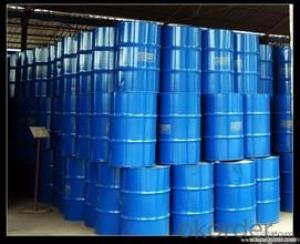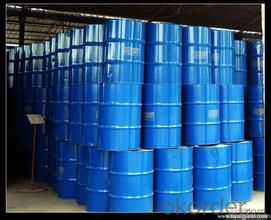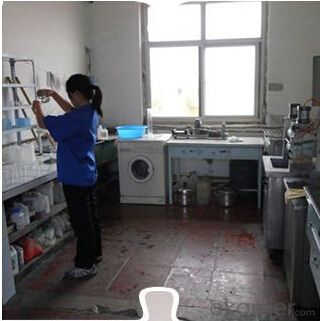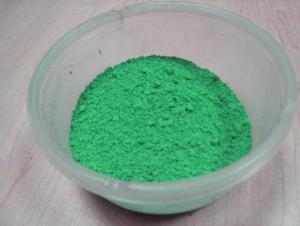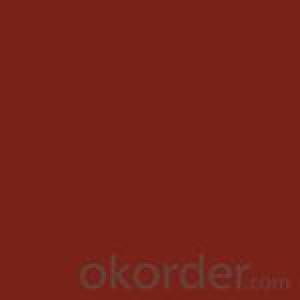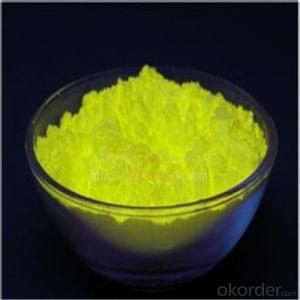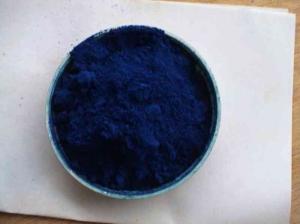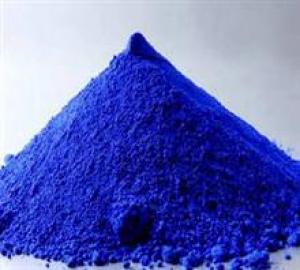Chemical silane siloxane durable water repellent for textile AB
- Loading Port:
- Shanghai
- Payment Terms:
- TT OR LC
- Min Order Qty:
- 1 bottle
- Supply Capability:
- 10000 bottle/month
OKorder Service Pledge
OKorder Financial Service
You Might Also Like
Quick Details
| Classification: | Chemical Auxiliary Agent | CAS No.: | N/A | Other Names: | Waterproofing agent |
| MF: | N/A | EINECS No.: | N/A | Purity: | 99% |
| Place of Origin: | Hebei China (Mainland) | Type: | Finishing auxiliary | Usage: | Textile Auxiliary Agents,Silane siloxane textile water repellent |
| Brand Name: | RUI XU | Model Number: | AB | Certificate:: | ISO9001:2000 |
| Environmental:: | no APEO, PFOA, PFOS | Toxicological:: | non-toxic | Hazards:: | harmless |
| Stability:: | high |
Packaging & Delivery
| Packaging Detail: | 25,125kg plastic drum 15-17tons/20GP' |
| Delivery Detail: | within 15 days after deposit |
Specifications
1. washable
2. soft handle, elastic resilience, smoothness and gas permeability
3. no APEO, PFOA, PFOS
Sample is available
silane siloxane water repellent for textile AB
1. Physicochemical properties:
Ingredients: organosilicon compound
Appearance: A:white emulsion B: semitransparency emulsion
Ion: anionic
PH: A:4-5 B:5-6
2. Application of scope:
Various fibres such as cotton, Polyester, dacron, nylon.
3. Advantages:
Excellent water repellent ability
soft handle, elastic resilience, smoothness and gas permeability
no APEO, PFOA, PFOS
washable
4. Application methods:
1. A:15 g/l , B:15g/L, drying by 180-190°C for 1 minute to cotton,polyester,dacron.
2. A:10 g/l , B:10g/L, drying by 170°C for 2 minutes
practical dosage depends on trials.
5. Limited guarantee:
As the application conditions and methods of this product in practice are not controllable, we will not give any form of guarantee about the applicatablity, and not afford any occasional or attached lose, the only guarantee we give is that the product we provide is meet the Huancheng available specification
- Q: okay so I have always used all the cheap makeup and I am sick of it! I was wondering if mac pigments will give me a lot of color without having to use half of the container. Most eyeshadows look nothing like they are supposed to on me. they are like 100 times lighter. I have seen beautiful things done with the pigments but they look like they could get everywhere really easy. will they give me vibrant color without getting all over?
- You okorder Goodluck!
- Q: What is better, Mac eye pigments or the regular eyeshadow? Also, has anyone tried the mixing medium solution?
- no longer each and every of the pigments are meant for the eyes; some are purely for the cheeks and/or lips. in case you purchase the pigments, there's slightly paper featuring it that tells you which of them of them are eye secure. As for the crushed pigments, I heard they paintings purely superb for the eyes.
- Q: why light and pigments are different?
- A pigment is a material that changes the color of reflected or transmitted light as the result of wavelength-selective absorption. This physical process differs from fluorescence, phosphorescence, and other forms of luminescence, in which a material emits light. Many materials selectively absorb certain wavelengths of light. Materials that humans have chosen and developed for use as pigments usually have special properties that make them ideal for coloring other materials. A pigment must have a high tinting strength relative to the materials it colors. It must be stable in solid form at ambient temperatures. For industrial applications, as well as in the arts, permanence and stability are desirable properties. Pigments that are not permanent are called fugitive. Fugitive pigments fade over time, or with exposure to light, while some eventually blacken. Pigments are used for coloring paint, ink, plastic, fabric, cosmetics, food and other materials. Most pigments used in manufacturing and the visual arts are dry colourants, usually ground into a fine powder. This powder is added to a vehicle (or binder), a relatively neutral or colorless material that suspends the pigment and gives the paint its adhesion.
- Q: a question on my photosynthesis test review...=_=
- it is in maximum cases the nitrogen. All fertilizers have a N-P-ok quantity ( like 10-10-10) the place each quantity corresponds to the according to cent of each nutrient: nitrogen (N), phosphorous (P), and potassium (ok). The nitrogen in Miracle advance is in maximum cases urea compounds, like safeguard pronounced.
- Q: i want to get mac melon pigment but i dont know what other eyeshadows to pair and blend it with. im looking for an everyday look. also what brushes to use with pigments?
- With the Melon pigment, I would recommend using warm, chocolate copper, bronze types of colors. It will provide a nice contrast to the melon while giving your eyes some added depth and definition. As far as brushes go, I like using the 252, large shader brush. This brush picks up pigment nicely and it has nice compressed/dense bristles so you can manipulate and lay the pigment down with greater ease. I like the #286 The dual fiber blending brush for pigments as well. It's made of natural fiber and synthetic fiber. This is a great brush because you really get 2 brushes in 1. With this 'blending' brush you can also use it for targeted color deposits and the synthetic fibers won't suck up what you just laid down and you will get a flawless, beautifully blended eyeshadow application.
- Q: explain how the pigments in colored objects such as clothes differ from plant pigments
- Green pigments absorb light in the red and blue parts of the spectrum and reflect the green back to our eyes. The major functional difference between chlorophyll and say jade green is that only the chlorophyll in living systems can transfer the absorbed light energy and the excited electron to another molecule, thus trapping it. In biology, pigment is any material resulting in color in plant or animal cells which is the result of selective absorption. Some biological material has so-called structural color, which is the result of selective reflection or iridescence, usually done with multilayer structures. Unlike structural color, pigment color is the same for all viewing angles. Nearly all types of cells, such as skin, eyes, fur and hair contain pigment. Butterfly wings typically contain structural color, although many of them contain pigment as well. Creatures that have deficient pigmentation are called albinos. In the coloring of paint, ink, plastic, fabric and other material, a pigment is a dry colorant, usually an insoluble powder. There are both natural and synthetic pigments, both organic and inorganic ones. Pigments work by selectively absorbing some parts of the visible spectrum (see light) whilst reflecting others. A distinction is usually made between a pigment, which is insoluble, and a dye, which is either a liquid, or is soluble. There is no well-defined dividing line between pigments and dyes, however, and some coloring agents are used as both pigments and dyes. In some cases, a pigment will be made by precipitating a soluble dye with a metallic salt. The resulting pigment is called a lake.
- Q: what roles do pigments have in energy transfer?
- Pigments okorder /... When a photon of just the right amount of energy strikes an electron resonating in the pigment, the electron can absorb the photon and get promoted to a higher quantum level. The photon must have just the exact amount of energy to boost the electron from its current level to its new level or it cannot be absorbed. If the incoming photon is just right to promote an electron, in that pigment, the newly energized electron resonates along the bonds at the higher energy level where it can pass to the photosynthetic reaction center from the pigment array, to split water and take back an electron. Meanwhile the chlorophyll's electron passes to the electron transport chain to begin oxidative phophorylation.
- Q: What is pigment?
- Pigment is a substance that gives color to tissue. Pigments are responsible for the color of skin, eyes, and hair. I don't think you can buy pigment unless you're buying a product that changes the look of your pigment such as a self tanner lotion. Or a product may say the pigment is red but the product itself is not pigment. Pigment is a natural exsisting substance within your skin and inside your eyes and hair.
- Q: light absorption, which pigments are involved?
- All photosynthetic organisms contain one or more organic pigments capable of absorbing visible radiation, which will initiate the photochemical reactions of photosynthesis. The three major classes of pigments found in plants and algae are the chlorophylls, the carotenoids and the phycobilins. Carotenoids and phycobilins are called accessory pigments since the quanta (packets of light) absorbed by these pigments can be transferred to chlorophyll. Chlorophylls chlorophyll a - present in all higher plants and algae chlorophyll b - present in all higher plants and green algae chlorophyll c - diatoms and brown algae chlorophyll d - red algae (chlorophyll a is present in all photosynthetic organisms that evolve O2.) Chlorophyll molecules contain a porphyrin 'head' and a phytol 'tail'. The polar (water-soluble) head is made up of a tetrapyrrole ring and a magnesium ion complexed with the nitrogen atoms of the ring. The phytol tail extends into the lipid layer of the thylakoid membrane. Carotenoids (carotenes and xanthophylls) Carotenes: -carotene - higher plants and most algae $-carotene - most plants some algae xanthophylls: luteol, fucoxanthol and violaxanthol Carotenoids contain a conjugated double bond system of the polyene type (C-C=C-C=C). Energy absorbed by carotenoids may be transferred to chlorophyll a for photosynthesis. Phycobilins (found mostly in red and blur-green algae): phycoerythrin phycocyanin allophycocyanin )
- Q: i also need the color they are links would be great if you know a good one
- anthocyanis Xanthocyanins These are the reds and yellows you see in the fall when the green leaves turn colors
Send your message to us
Chemical silane siloxane durable water repellent for textile AB
- Loading Port:
- Shanghai
- Payment Terms:
- TT OR LC
- Min Order Qty:
- 1 bottle
- Supply Capability:
- 10000 bottle/month
OKorder Service Pledge
OKorder Financial Service
Similar products
Hot products
Hot Searches
Related keywords
